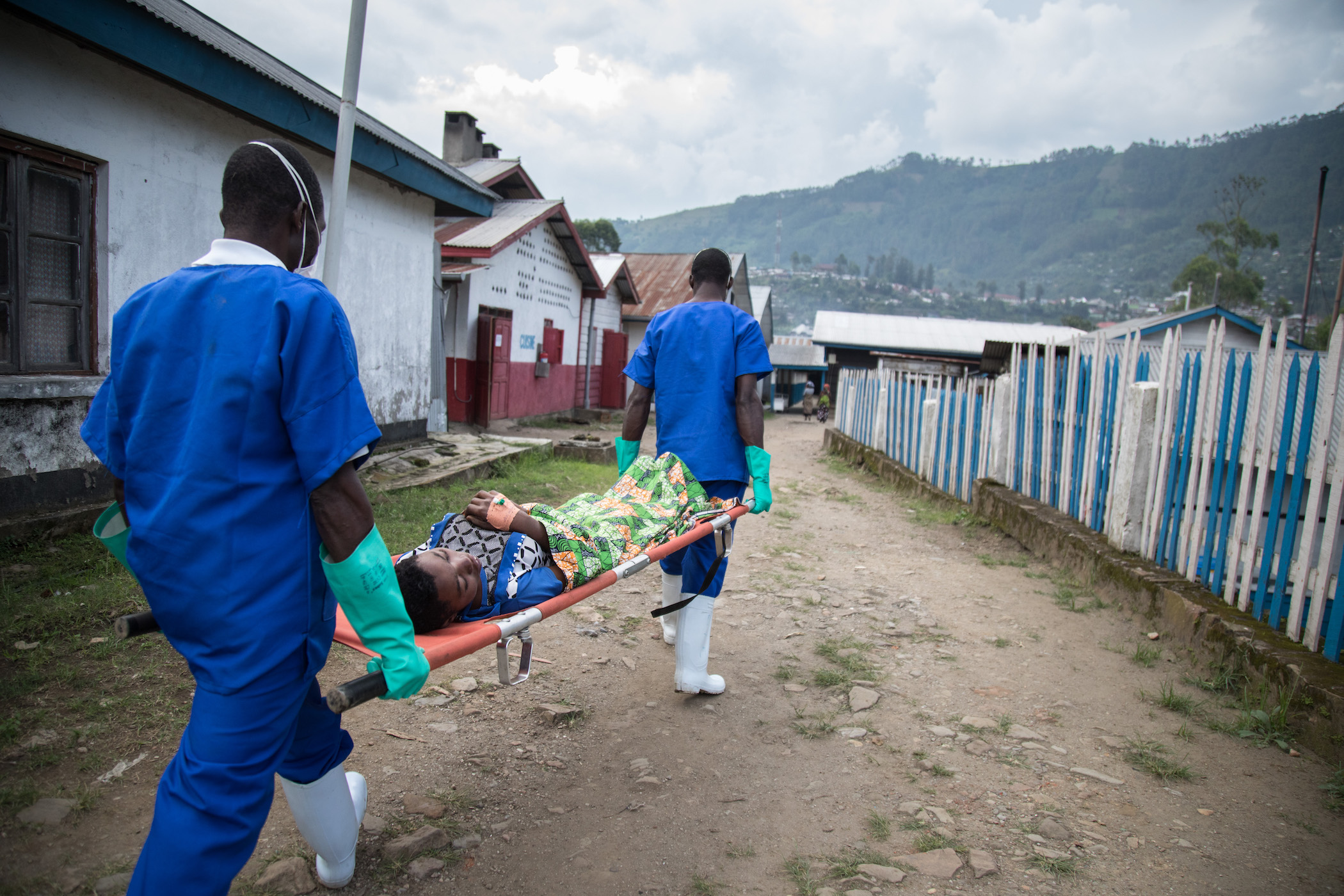A failure to slow global warming is providing many deadly diseases with the opportunity to expand their reach, putting the health of millions of people at risk. Read on to understand how climate change and infectious disease are linked, and what we can do to limit the damage.

Two medical workers transfer a patient from the cholera treatment unit of Médecins Sans Frontières to the intensive care unit at the general hospital in Masisi, in the east of the Democratic Republic of the Congo.

-
Many infectious diseases are climate sensitive.
-
Warmer climates are expanding the areas where disease-carrying vectors (like mosquitoes and ticks) can survive.
-
Increased rainfall, floods and drought can create stagnant water for vectors to breed or increase the risk of contaminated water.
-
Extreme weather events disrupt existing infrastructure and health systems, making many more vulnerable to infection.
-
Other factors like migration, urbanisation and deforestation can also impact the spread of infectious diseases.
-
Without swift climate action, we will see an escalation of infectious diseases.
-
We need to act now to limit and adapt to the impacts of climate change.
Climate change is widespread, rapid and intensifying.
Homes are being lost due to unprecedented floods and fires, heat-related illnesses are on the rise, and our food systems are increasingly at risk.
While rising global temperatures are proving disastrous for humans, they’re providing the perfect environment for many climate-sensitive infectious diseases to thrive.
Global warming is expanding the areas in which disease-carrying vectors (like mosquitoes and ticks) can survive. Higher levels of rainfall, flooding and droughts can create stagnant water for vectors to breed or increase the risk of contaminated water. And extreme weather events can disrupt existing infrastructure, sanitation and health systems, making many more vulnerable to infection.
Other factors linked to climate change can also play a role in the spread of infectious diseases: like migration, urbanisation and deforestation. However, due to the complex, overlapping factors at play, it can be challenging to link these impacts directly to climate change.
The March 2022 report from the Intergovernmental Panel on Climate Change (IPCC) warned that without swift climate action we will see an escalation of infectious diseases. They will spread to new regions (and may decline in some endemic areas). They’ll surge in areas where they were previously under control. And diseases that have never previously infected humans (Disease X) may 'spill over' from animals.
Discover more about how climate change is affecting:
While climate change may increase diseases in nature, whether this leads to an increase in disease risk for humans depends upon a range of societal, infrastructure and medical factors.
Mitigation
The most important thing we can do is act now to limit the impacts of climate change. This means reducing the flow of heat-trapping greenhouse gases into the atmosphere. We can do this in two ways:
- reduce the sources of these gases (for example, the burning of fossil fuels for electricity, heat or transport)
- preserve and restore the 'sinks' that accumulate and store these gases (such as the oceans, forests, peat and soil)
As the IPCC noted, we must stabilise greenhouse gas levels "in a timeframe sufficient to allow ecosystems to adapt naturally to climate change, ensure that food production is not threatened and to enable economic development to proceed in a sustainable manner”.
Adaptation
While mitigation provides global benefits, adaptation often happens on a regional or local level. We need to explore and implement ways to adapt to life in a changing climate.
- Strengthen our health systems to reduce the burden of disease. This can include setting up surveillance systems that will pick up early evidence of emerging infections or changes in occurrence as a result of climate change.
- Support new research. The intersections of infectious disease and climate science are rarely explored. We must bring these two communities together to catalyse new research and strengthen our capacity to respond to emerging threats.
- Invest in a collaborative approach. To effectively detect, respond to, and prevent outbreaks of disease and food safety problems, epidemiological data and laboratory information should be shared across sectors. Governments, researchers and workers across sectors at the local, national, regional and global levels should implement joint responses to health threats.
- Sustainable urban development. The World Bank predicts that more than one billion people are at risk of being driven from their homes for climate-related reasons. As more people move into cities as a result, we must ensure that we build cleaner and greener while ensuring that everyone has access to clean water and sanitation.
This article was first published on 12 May 2022.
We’re funding vital research into the impact climate change has on human health around the world, at national, regional and global levels. Explore our current funding call:
Advancing climate mitigation solutions with health co-benefits in low- and middle-income countries
A failure to slow global warming is providing many deadly diseases with the opportunity to expand their reach, putting the health of millions of people at risk. Read on to understand how climate change and infectious disease are linked, and what we can do to limit the damage.